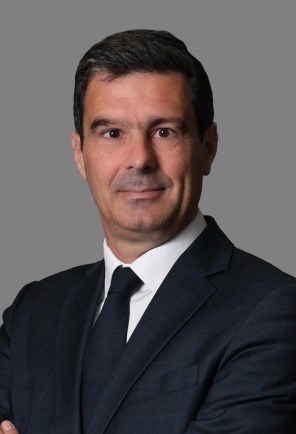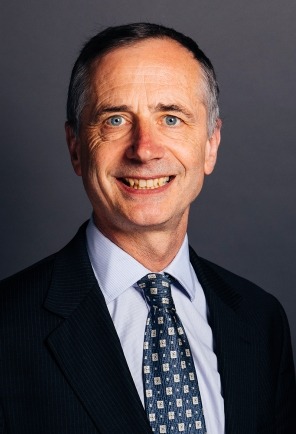A&M’s Malcolm McKenzie and Aerospace Leaders Discuss Industry’s Rebound at Britain’s Farnborough Airshow
Roundtable discussed challenges facing the aerospace and defence industry including the green transition and workforce shortages
From a staffing crisis to shrinking airport capacity and the growing pressure to decarbonise, the aerospace and defence sector is facing a rocky road to recovery from the pandemic.
Industry leaders gathered to discuss these and other major trends at the Farnborough International Airshow, which brought together over 80,000 visitors and 1,500 exhibitors from across the airline, defence and space sectors in the UK in July.
Malcolm McKenzie, a Managing Director with Alvarez & Marsal (A&M) and Head of the European Corporate Transformation Services practice in London, chaired a panel with a group of industry experts at the event, including Cory Gionet, Vice President of Supply Chain at Boeing Commercial Airplanes, Gonçalo Pires, CFO of TAP Air Portugal, and Eric Schulz, CEO of SHZ Consulting and a former Airbus executive.
Some of the key insights of the conversation are summarised below.
After a chaotic June, the airport situation is progressively improving while demand continues to grow
In June and early July, airports faced severe disruptions due to a lack of qualified personal, high absenteeism and other challenges. The situation is slowly improving but some airports have not yet been able to catch up. For example, to secure the quality of its service, a passenger cap has been introduced at Amsterdam’s Schiphol Airport, reducing the daily number of departing passengers from 125,000 to 75,000.
Industry leaders believe the situation will progressively normalise. Ticket price inflation driven by higher fuel costs is currently not impacting demand, which remains strong, particularly for leisure travel. Airlines and airport operators expect to see continuous growth in 2023 but at a slower pace than current “back to normal” acceleration.
OEMs and suppliers are confident in their potential to ramp up output
Operators are predicted to order more than 40,000 new commercial airplanes over the next 20 years, according to a market outlook released by Boeing at the trade show. However, airport capacity and staff constraints across the industry’s value chain could be a critical brake on this progress.
While recent hiring efforts could ease the pressure in the immediate future, panellists agreed that there isn’t a quick fix for the shortage of skilled workers affecting airlines and ground-handlers. Holistic reforms will be needed, including the adoption of a stronger talent acquisition pipeline and retention proposition, as well as government support through wage subsidy programmes.
OEMs expect to be more directly involved with suppliers
Persistent supply chain snags threaten aerospace manufacturers with parts shortages and delays at a time they look to increase output to support growing demand. In order to keep production moving and safeguard end-to-end performance, some of the resilience tactics being deployed include ordering earlier, shortening supply chains or working closely with suppliers to help them manage soaring inflation and other problems.
Business models will have to evolve and adapt to new market demands
Panellists discussed whether the robust recovery in international air travel is likely to continue into 2023, with most agreeing that next year will be a year of moderate growth. That said, business travel is unlikely to return in full to pre-pandemic levels due to permanent shifts in work patterns as well as cost and emission concerns. This will force airline companies to adapt their business models, with changes in fleets, seating configuration and services offering expected. Another key point of debate was how much inflation could slow the rebound in air travel as consumers cut back on discretionary spending.
Industry players are committed to advancing transition to clean aviation
The panel discussion also focused around lower-emission fuel and technology to support net-zero commitments. According to panellists, sustainable aviation fuel (SAF) holds the strongest short-term potential to decarbonise aviation, particularly with long-haul travel, but supply and price remain a key barrier for wider adoption. Other flight technologies such as hydrogen and battery-powered planes will likely play a larger role in longer-term carbon reductions.
Experts agreed that a boost in production capacity and infrastructure is required to make SAF a reality sooner rather than later, alongside a clear roadmap to plan for investments. In addition, the industry would like to see a globally aligned approach to ensure fair competition and prevent disruptions as companies accelerate their transition to SAF, including long-term investments in infrastructure, engineering and fleet.
How can A&M help?
Alvarez & Marsal has the skills and experience to support business leaders in the aerospace, defence and OEM sectors managing through the most difficult financial and operating environments.
A&M brings not only financial and operating expertise, but also the ability to assist in program and company negotiations with governments, industry partner companies and suppliers to create win-win outcomes, minimize business disruption and deliver on the mission.
For more information, get in touch with our team.
Contacts
Florent Maisonneuve
Malcolm McKenzie
Sylwia Raczynska
Steve Barron



